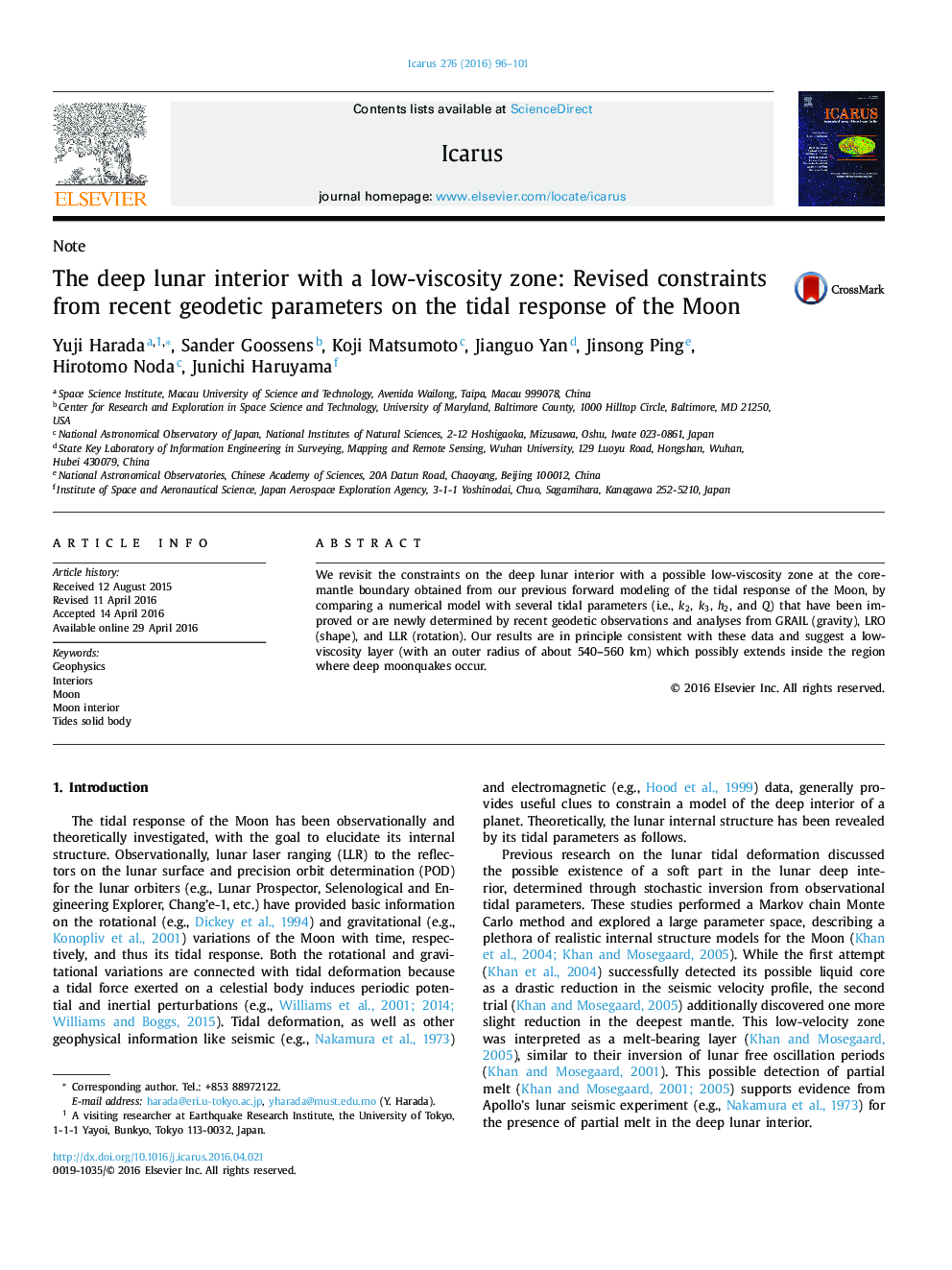| کد مقاله | کد نشریه | سال انتشار | مقاله انگلیسی | نسخه تمام متن |
|---|---|---|---|---|
| 1772910 | 1523514 | 2016 | 6 صفحه PDF | دانلود رایگان |
• We modeled the lunar tidal response and compared it with the latest geodetic data.
• Our results are mostly consistent with the recent geodetic observations and analyses.
• The results indicate a possible low-viscosity layer in the deep lunar interior.
• The layer extends to 540–560 km.
• The layer extends just below or inside the place where seismic nests are located.
We revisit the constraints on the deep lunar interior with a possible low-viscosity zone at the core-mantle boundary obtained from our previous forward modeling of the tidal response of the Moon, by comparing a numerical model with several tidal parameters (i.e., k2, k3, h2, and Q) that have been improved or are newly determined by recent geodetic observations and analyses from GRAIL (gravity), LRO (shape), and LLR (rotation). Our results are in principle consistent with these data and suggest a low-viscosity layer (with an outer radius of about 540–560 km) which possibly extends inside the region where deep moonquakes occur.
Journal: Icarus - Volume 276, 15 September 2016, Pages 96–101
